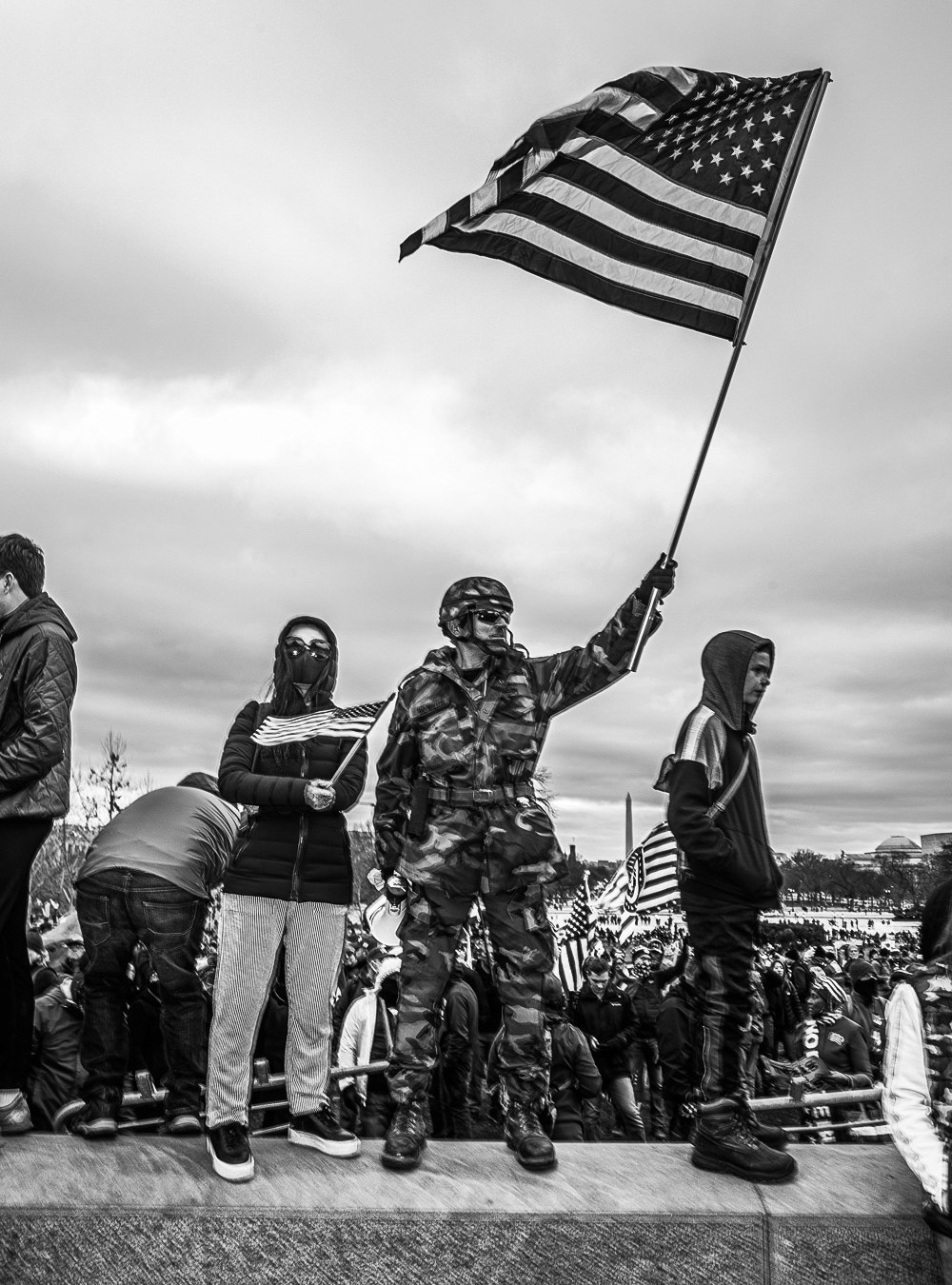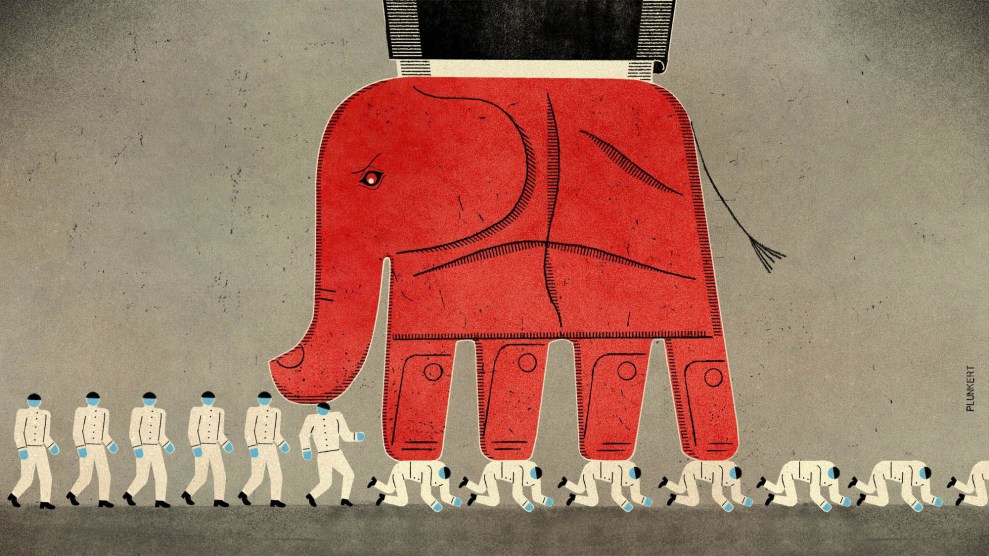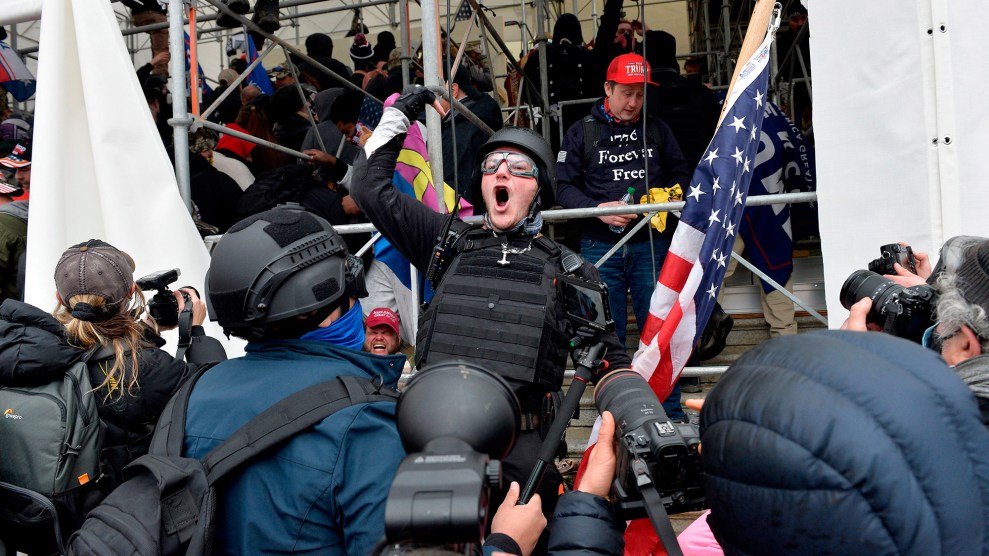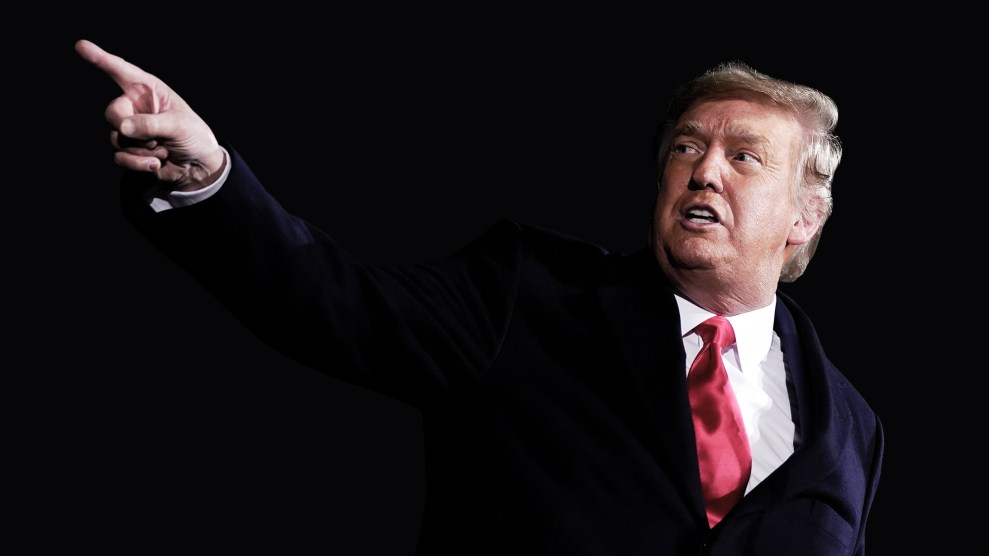Even the wifi password was a signal. Attendees at President Donald Trump’s rally in Dalton, Georgia, on January 4 who wanted to log in to the Make America Great network had to enter the phrase into their devices: “SeeYouJan6!” Trump was in town that night ostensibly to boost two Republican Senate candidates, but he spent much of his speech railing about the “stolen” 2020 election—and inciting supporters to descend on the nation’s capital two days later. “They’re not taking this White House,” he declared, Marine One spotlighted behind him. The crowd roared. “We’re going to fight like hell.”
Throughout the summer and early fall, amid polls forecasting a Trump loss, the president and his surrogates had ramped up their baseless claims that the election would be tainted by massive fraud. (The election proved to be “the most secure in American history,” according to US cybersecurity director Chris Krebs, whom Trump quickly fired for saying so.) By mid-December, as Trump’s campaign was losing dozens of lawsuits alleging manipulated results in battleground states, Trump began targeting January 6, the day Congress would certify President Joe Biden’s victory. “Statistically impossible to have lost the 2020 Election,” Trump tweeted. “Big protest in D.C. on January 6th. Be there, will be wild!” The election was “the biggest scam in our nation’s history,” he wrote in another tweet, adding: “Never give up. See everyone in D.C. on January 6th.”
Trump did more than just invite supporters to a rally. He also repeatedly shared a slickly produced video, titled “The Plot to Steal America,” that warned ominously of a Chinese communist scheme involving Biden, the Democrats, and the news media, and called for Trump supporters to mobilize. “We know that our rights don’t come from the government, but from God,” declared the narrator, an Ohio jewelry buyer formerly employed by the pro-Trump propaganda outlet the Epoch Times. “And we will fight to the death to protect those rights.” In a tweet the day after Christmas, Trump suggested that if the Democrats were in his position, the “Rigged & Stolen” presidential election would be considered “an act of war, and fight to the death.”
This drumbeat all built toward the cold gray morning in early January when thousands of fervent Trump supporters gathered for a “Save America” rally outside the White House. “We’re coming for you,” vowed Donald Trump Jr. from the stage, targeting members of Congress who didn’t support overturning the November results. “Let’s have trial by combat,” said Rudy Giuliani, the president’s personal attorney, adding, “I’ll be darned if they’re going to take our free and fair vote.” “Today is the day American patriots start taking down names and kicking ass!” shouted Alabama congressman Mo Brooks. “Our ancestors sacrificed their blood, their sweat, their tears, their fortunes, and sometimes their lives…Are you willing to do the same?”
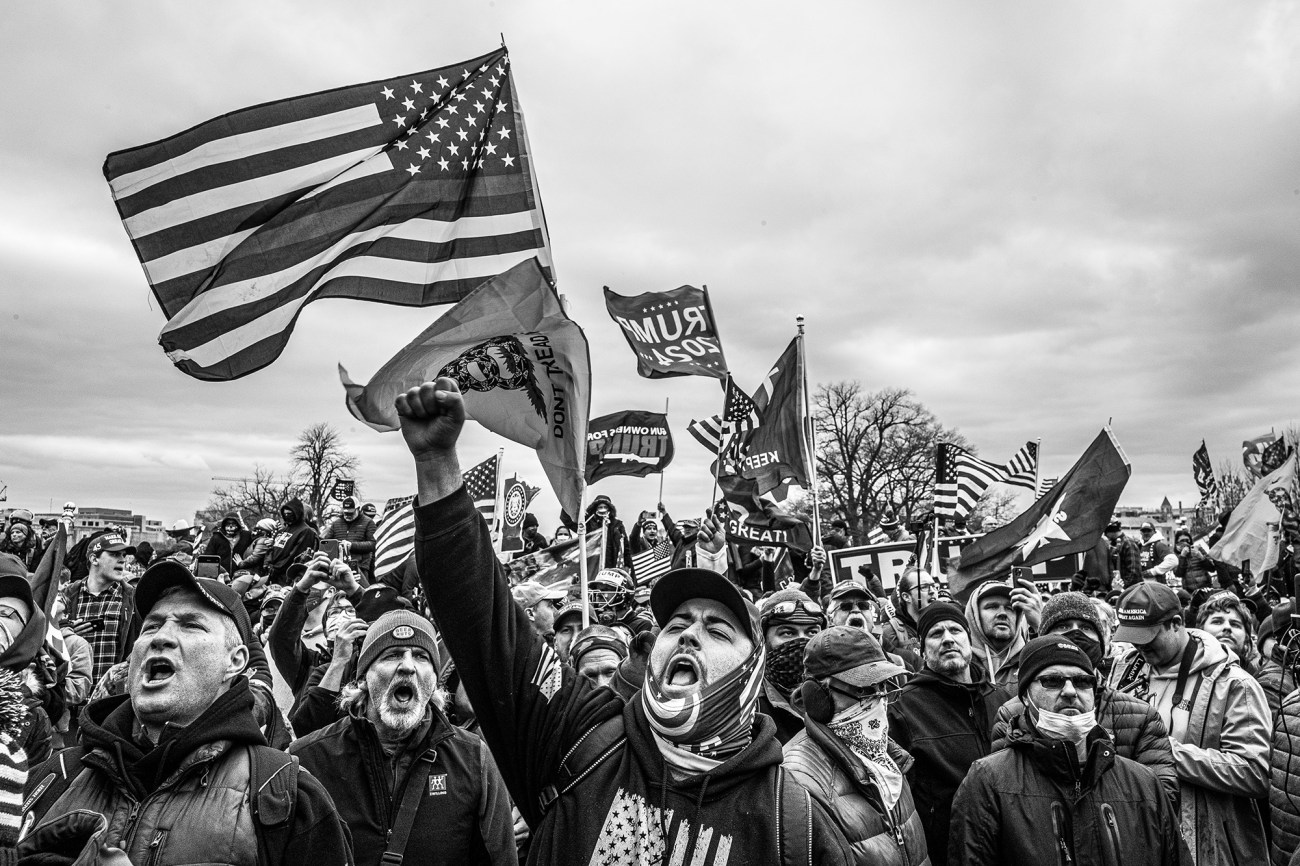
Trump strode to the podium for the finale. “We will never concede,” he said. “You don’t concede when there’s theft involved.” As he urged supporters to march on the Capitol and “stop the steal,” he slipped in a line about making their voices heard “peacefully and patriotically.” But the majority of his speech was steeped in the language of betrayal and belligerence. “You’ll never take back our country with weakness,” he told the increasingly agitated crowd. “You have to show strength.” And: “If you don’t fight like hell, you’re not going to have a country anymore.”
The mob assault on Congress that left five people dead, scores injured, the Capitol building desecrated, and American democracy deeply shaken was the culmination of a campaign of terrorism. It was led by the president of the United States.
The description of Trump as a terrorist leader is neither metaphor nor hyperbole—it is the assessment of veteran national security experts. Trump, those experts say, adopted a method known as stochastic terrorism, a process of incitement where the instigator provokes extremist violence under the guise of plausible deniability. Although the exact location, timing, and source of the violence may not be predictable, its occurrence is all but inevitable. When pressed about the incitement, the instigator typically responds with equivocal denials and muted denunciations of violence, or claims to have been “joking,” as Trump and those speaking on his behalf routinely made.
Throughout his presidency, numerous violent actors directly invoked him and his rhetoric, including the mass shooter who murdered 22 people in El Paso, Texas, in 2019, whose writings echoed Trump’s talking point about a supposed migrant “invasion” of the United States. After Biden’s victory, extremists responding to Trump’s lies about fraud stalked and menaced public officials, election workers, and Trump’s Democratic and Republican critics. “Stop the Steal” rallies led to beatings, stabbings, and a shooting. When the president’s enraged backers roamed the Capitol hallways, some were hunting House Speaker Nancy Pelosi and vowing to “hang Mike Pence” for refusing to interfere with the election certification.
“Stochastic” derives from the ancient Greek words stochastikos and stochazesthai, meaning “skillful in aiming” and “to target.” Among counterterrorism experts, the term historically was applied to the techniques used by ISIS and al-Qaeda as well as anti-abortion religious extremists, all of whom used inflammatory rhetoric to radicalize others to carry out horrific attacks. Trump did the previously unthinkable: He brought the method into the White House.
“The term ‘dog whistle’ is too benign here,” says Juliette Kayyem, a former assistant secretary in the Department of Homeland Security. Kayyem first brought wider attention to stochastic terrorism in 2018 when discussing Cesar Sayoc, a diehard Trump supporter who sent mail bombs to CNN and nearly a dozen Democratic figures, including Biden, Kamala Harris, and Barack Obama. “This is true incitement,” she says. “This is an understanding of how language is going to be interpreted for action.” Most media and political analysts hesitated to talk about Trump in such stark terms, but Kayyem concluded that Trump’s behavior had to be called out for what it was: The president, she told me in December, was “promoting terrorism.”

Among national security experts, Kayyem was not alone in this view. After the election, Kori Schake, a former senior national security official in the George W. Bush administration, described Trump publicly as “an arsonist of radicalization.” In late 2020, two senior counterterrorism experts who had recently left the Trump administration—Olivia Troye, a former top aide to Pence, and Elizabeth Neumann, a former DHS assistant secretary—called out Trump’s incitement. In an op-ed three weeks before the election, Neumann wrote that Trump had “repeatedly been confronted” with evidence of his rhetoric causing violence, and that his “inconsistent and muddied” denouncements of violence and white supremacists only exacerbated the problem: “Extremists thrive on this mixed messaging, interpreting it as coded support.”
Trump’s nods and winks to far-right hate groups began during his 2016 campaign and came to a head in August 2017 when he suggested that the torch-wielding white supremacists who marched in Charlottesville, Virginia, included some “very fine people.” His demagoguery was initially focused on “the other,” whether it was Muslims, or Mexican “rapists,” or migrant caravans, or “shithole” countries. He repeatedly attacked the news media as “the enemy of the people,” provoking violent threats and plots against journalists. By his 2020 reelection campaign, he’d turned his incitement squarely on the American political leaders who opposed him.
The campaign of incitement escalated last spring when Trump urged supporters to “Liberate Michigan!” in response to pandemic restrictions ordered by Democratic Gov. Gretchen Whitmer. He then sided with the armed protesters who swarmed the state Capitol: “These are very good people, but they are angry,” he tweeted. “They want their lives back again, safely!” By early October, the FBI had arrested 13 people for violent plots, including some who allegedly planned to kidnap Whitmer. Far-right extremists also allegedly targeted Gov. Ralph Northam of Virginia, whom Trump had blasted as “crazy” for his pandemic policies and for supposedly planning to take away Virginians’ guns. When asked during a presidential debate in September whether he would denounce the neofascist gang known as the Proud Boys, Trump infamously responded that they should “stand back and stand by.”
After his election loss, Trump’s incitement became ever more alarming. In early December, the Michigan secretary of state was accosted by a mob in front of her home while putting up Christmas lights with her young son. On December 14, state electors in Michigan and Arizona faced with “credible threats” were compelled to take extraordinary security measures as they convened to certify Biden’s victory. “We are stuck parsing Trump’s words, forced into textualist debates about what he meant,” Kayyem tweeted that day. “Meanwhile his supporters know EXACTLY what he means.”
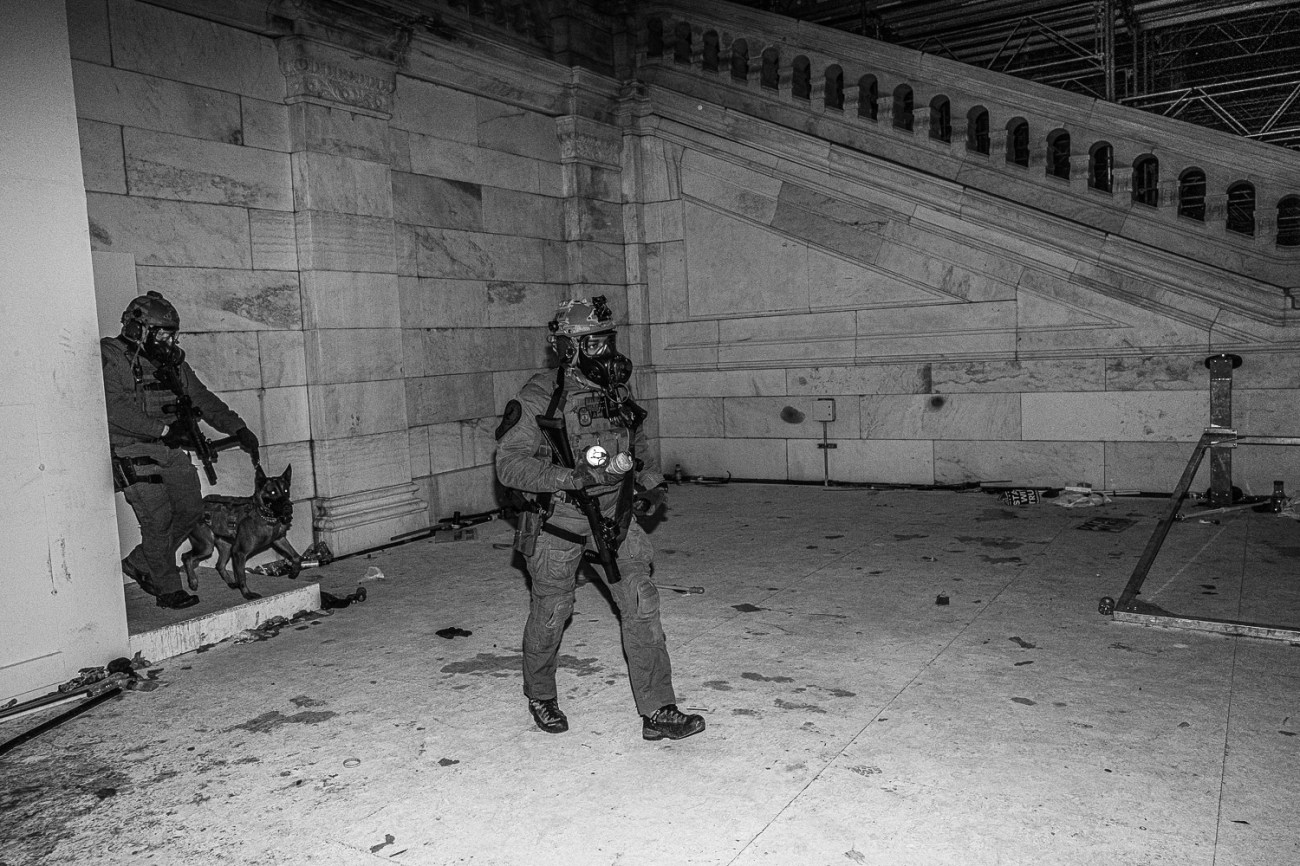
Extremist chatter exploded in the month before the assault on Congress. According to one media analysis, the phrase “Storm the Capitol” was mentioned 100,000 times on social media. The Proud Boys embedded Trump’s “wild!” tweet in flyers encouraging members to join the DC rally and hawked T-shirts with the slogan “Proud Boys standing by.” In late December, the Wall Street Journal reported, leaders of the group—some of whose members stormed the Capitol—vowed on social media to put “boots on the ground” and “turn out in record numbers” on January 6. Trump, one said, had just given them “the green light.”
As his supporters marauded through the Capitol and lawmakers hid, Trump watched the chaos on TV from inside the White House. He was entertained and buoyed by it, according to multiple news reports. He called senators, pressuring them to block the certification. He tweeted that Pence had lacked “the courage to do what should have been done.” Then, Trump broadcast his solidarity with the insurrectionist mob, telling them in a video posted on Twitter, “We have to have law and order,” and to “go home in peace”—but mostly using the one-minute message to reiterate that his “landslide election” was stolen and denounce treatment of his supporters as “so bad and so evil.”
“We love you. You’re very special,” Trump told the mob, looking directly into the camera. “I know how you feel.”
Even as his presidency neared its end, security experts warned that Trump still needed to be vanquished as a terrorist leader. “He tells them where to go. He tells them what to do. He tells them why they’re angry,” Kayyem said. “So we need to start at the top, like with any counterterrorism effort, which is total isolation of the president of the United States.” As Republican lawmakers called for “unity” instead of impeachment and possible disqualification from holding office again, Kayyem said it was crucial not to allow Trump a second act. “This is how to think about it: No forgiveness, not now,” she said. Figuratively speaking, she added, that required “total decapitation.”
President Joe Biden inherited a nation reeling from a surging pandemic and an economy in crisis. He took office also facing an extraordinary threat from within. “We’ve hit a frightening apex,” says George Selim, a senior vice president of the Anti-Defamation League and counterterrorism expert who served under three presidents. “We’re at a rare moment in history where threats from far-right domestic terrorism have reached levels that have surpassed any threat of harm to the American homeland from external actors. That’s a moment I never thought I’d see.”
Biden called out the threat of “political extremism, white supremacy, [and] domestic terrorism” in his inaugural speech and vowed to defeat it. Yet even with Trump out of power, what should be done about an unrepentant, charismatic leader who is still supported by millions of Americans and appears both capable and willing to further inspire a homegrown terror movement? The Capitol insurrection was a beginning, not an end—celebrated by far-right extremists as a thrilling affirmation of their relevance. National security experts and historians alike know that failed coup attempts are often followed by successful ones.
Experts say that danger requires a massive official response. “We need a dedicated group in the federal government that is focused on this,” says Selim, who headed a counter-extremism program in Obama’s DHS—a multiagency effort Trump moved to dismantle in 2017. The scale of the resources needed today, he says, may well be tenfold greater than during the Obama administration. Using law enforcement to track and disrupt extremists is essential, but it shouldn’t be the only response. “It can’t just be analysts who are observing and detecting chatter online,” Selim says. “There has to be comprehensive involvement of mental health, social services, and education providers. All of government needs to be brought to bear, along with local community partners. We all saw in the past four years how the violent melees and divisive discourse played out at town halls and in communities across the country. We need to reengage how we talk about and what the rules are for decorum and civic discourse, in a sustained effort over time.”
The effort to lower the political temperature and begin restoring a sense of common truth starts at the top. “Bad ideologies don’t die, but they do get shamed and isolated,” says Kayyem, noting Biden’s ability to rebuke Trumpism with a folksy “C’mon, man!” or a “You can’t be serious.” No ink was spared during the Trump presidency, she adds, over trying to understand the grievances of his ardent supporters. But violent extremism requires otherwise: “My hope is we’ll see the Biden administration push an agenda of shaming this.”
The deplatforming of Trump by Twitter and other tech companies showed promise for pushing extremism back toward the fringes: After he went silent and accounts boosting QAnon were banned, misinformation about election fraud, researchers found, plummeted on social media by more than 70 percent. Reversing Trump’s mainstreaming of hateful politics helps create more off-ramps for fired-up partisans who might otherwise find conspiracy theories alluring.
Successfully combating Trump-fueled extremism could reach deep into state and local governments. As former FBI agent Michael German has documented, far-right extremism remains a problem of unknown extent but clear presence among American law enforcement. According to threat assessment experts like Marisa Randazzo, a former chief research psychologist for the Secret Service, the failure to protect Congress in January raised unprecedented doubts about security leadership: “We have protective systems in place for different parts of our democracy that we’ve normally been able to rely upon, and that has to be called into question now.”
Reckoning with the domestic terrorism cultivated by Trump requires accountability for him and other leaders who abetted his incitement. But that is just the start. Everything from the monetization of far-right rage by Fox News and its upstart competitors to extremist groups recruiting and radicalizing people via social media must be confronted. “The biggest challenge,” observes Kayyem, “is going to be a cultural change with what was allowed to fester and how we root it out.”
